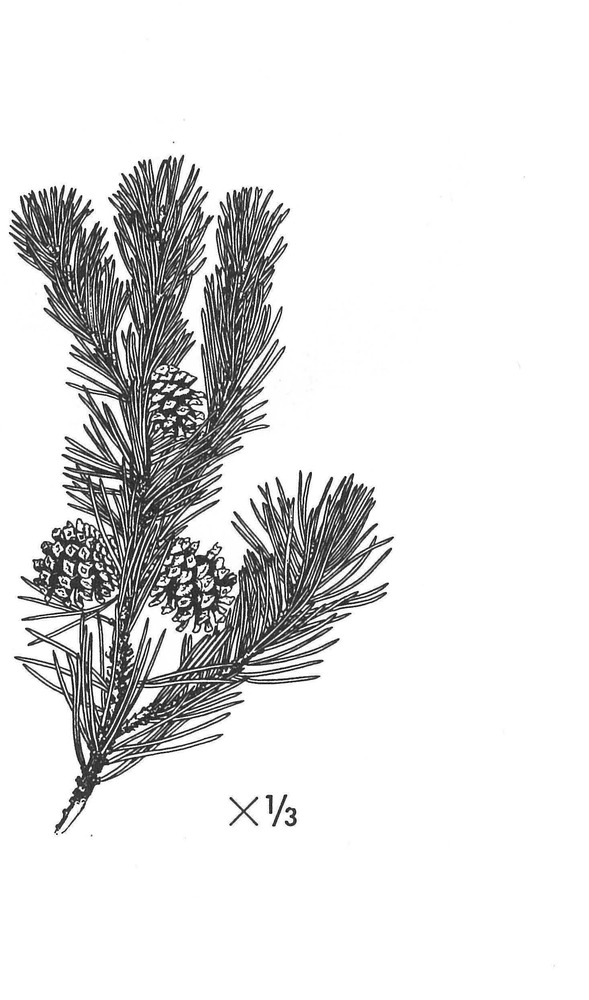| Pinus contorta Dougl. ex Loud. | |||
| |||
| Family | Pinaceae — APG family: Pinaceae | ||
| Common name | lodgepole pine | ||
| Description | Low shrubby tree, 6-10 meters tall, with slender, often twisted dark-green needles in fascicles of 2; bark thin, furrowed; staminate flowers orange-red; cones 3-5 cm long, light yellow-brown, persisting for many years; scales thin, concave, prickly. | ||
| Ecology | Muskegs, valley bottoms. Described from “NW America; Cape Dissapointment [Washington]; Cape Lookout [Oregon].” | ||
| Taxonomy notes | The coastal plant belongs to subsp. contérta, the inland plant in Yukon and British Columbia to the taller subsp. latifolia (Engelm.) Critchfield (P. contorta var. latifolia Engelm.; P. Murrayana var. Sargentii Mayr), which has very thin, scaly, unfurrowed bark. Westernmost lodgepole pines are found at mile 80 on high-way from Dawson. On the circumpolar map, continuous line indicates range of subsp. contorta and subsp. latifolia, broken line the range of subsp. Murrayana (Balf.) Critchfield (Pinus Murrayana Balf.). |
This is a digital representation of Eric Hultén’s ‘Flora of Alaska and Neighboring Territories: A Manual of the Vascular Plants’, which was published by Stanford University Press in 1968. The book was digitized by C. Webb (at UAMN) as part of the Flora of Alaska project, with funding by the US NSF (Grant 1759964 to Ickert-Bond & Webb), and with permission of Stanford University Press. Data and images © 1968 Board of Trustees of the Leland Stanford Jr. Univ. Usage licence: Creative Commons BY-NC-SA 4.0. NB: You may find OCR errors; please refer to the hard-copy if in doubt.
